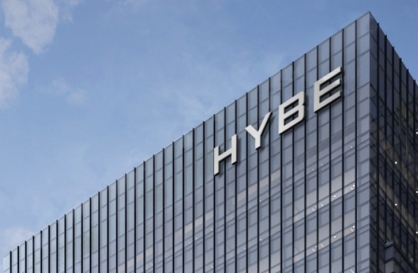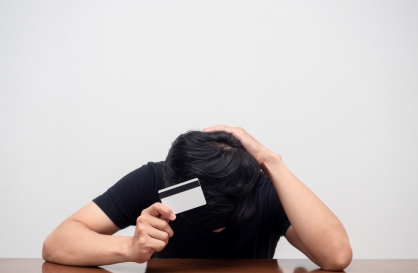Myeong-dong’s zeal for Chinese tourists pushes out locals
Seoulites feel neglected as shops turn to big-spending foreigners
By 원호정Published : March 27, 2016 - 17:39
Myeong-dong is one of the liveliest neighborhoods of Seoul, constantly abuzz with the sounds of shop owners calling out to potential customers, the rustle of shopping bags, cars honking and, last but not least, shoppers chattering -- in Mandarin.
Although Myeong-dong is considered a landmark of Seoul, the majority of the shoppers are clearly not from Korea.
“Chinese tourists make up about 60 percent of the shoppers,” said Lee Dong-hee, the director of the Myeong-dong Tourism Special District Association representing the store owners of Myeong-dong.
The remaining 40 percent are mostly tourists from Japan, Southeast Asia and Korea.
Many of the shops have consequently altered their services to better accommodate the big-spending Chinese customers who can be counted on to buy in bulk.
While it makes sense for the supply to follow the demand, some locals appear disgruntled.
“I don’t come to Myeong-dong often.” said Park Eun-jung, a 28-year-old office worker. “I feel like they look down on Koreans here, and I get angry. It’s like they only want Chinese people here.”
The frustration was felt by non-Chinese tourists as well.
“There are a lot of stores where people speak Chinese or Japanese, but not English. It’s a bit frustrating, but I can see why,” said Lisa Geraldson, a 36-year-old tourist from the U.S.
Promotional signs everywhere are written in or translated into Chinese; most stores also have employees who can speak Mandarin.
Although Myeong-dong is considered a landmark of Seoul, the majority of the shoppers are clearly not from Korea.
“Chinese tourists make up about 60 percent of the shoppers,” said Lee Dong-hee, the director of the Myeong-dong Tourism Special District Association representing the store owners of Myeong-dong.
The remaining 40 percent are mostly tourists from Japan, Southeast Asia and Korea.
Many of the shops have consequently altered their services to better accommodate the big-spending Chinese customers who can be counted on to buy in bulk.
While it makes sense for the supply to follow the demand, some locals appear disgruntled.
“I don’t come to Myeong-dong often.” said Park Eun-jung, a 28-year-old office worker. “I feel like they look down on Koreans here, and I get angry. It’s like they only want Chinese people here.”
The frustration was felt by non-Chinese tourists as well.
“There are a lot of stores where people speak Chinese or Japanese, but not English. It’s a bit frustrating, but I can see why,” said Lisa Geraldson, a 36-year-old tourist from the U.S.
Promotional signs everywhere are written in or translated into Chinese; most stores also have employees who can speak Mandarin.

Some of stores that The Korea Herald visited had employees who spoke Chinese, but not fluent Korean. At a branch of cosmetics brand Nature Republic, a Chinese employee turned for assistance to a Korean employee when asked a question in Korean.
However, for Chinese tourists, Myeong-dong is a shopping haven.
“Everyone speaks Chinese, so it’s very easy (to shop),” said Chen, a 24-year-old from China.
And the shops make sure there is no language barrier that may disrupt their sales.
“We recruit employees who can speak Chinese because approximately 80 percent of our customers in the Myeong-dong branches are from China,” said Kim Hong-tae, a spokesman for Able C&C, which owns the popular cosmetics value chain Missha. According to Kim, each store has at least one employee who speaks Chinese.
Lin Ji, another Chinese shopper in her 40s, said that Myeong-dong was the ideal place to shop for gifts because most stores had prepackaged gift sets on display.
“There are lots of big packages that will be good for presents,” she said.
But while Chinese tourists may be good business for the time being, their presence has been creating significant concerns in the area.
As most Chinese visitors are interested in cosmetics only, restaurants and other shops in the district have been shuttered to make way for makeup.
“Most of the (cosmetics) brands that you would recognize have four or five branches,” explained Kim of Able C&C, adding that Missha operates four branches in Myeong-dong alone.
Lee of the Myeong-dong tourism organization said almost 1 out of every 10 shops in the area -- there are roughly 1,500 big and small enterprises -- sell cosmetics.
The area’s high real estate prices are adding to the proprietors’ woes. According to numbers released by the Ministry of Land, Infrastructure and Transport last month, the 10 most expensive plots of land in the country were all in Myeong-dong.
The now-iconic Nature Republic store at the entrance of the shopping area made the top of the list, reportedly worth 80.7 million won ($69,000) per square meter.
“The cosmetics stores are the only ones who can afford to stay,” Lee said.
Shops specializing in other types of merchandise have closed over the years, unable to afford the expensive rent amid a dwindling number of customers.
Restaurants in particular are shutting down quickly because street food carts are more appealing to tourists, leaving little demand for eat-in restaurants.
Lee and other industry watchers remain wary of the long-term impact of the current boom in Chinese customers, questioning just how attractive Myeong-dong may become if locals refuse to come.
“It‘s questionable whether tourists would want to continue to visit an area that is flooded by those who don‘t care about the upkeep of the area, and (with) no locals to be seen,” he said.
Industry watchers have raised concerns about a possible vacuum in the area in case Chinese visitors stop coming for economic or other reasons.
According to Lee, the large numbers of Japanese tourists that had dominated Myeong-dong up until about five years ago suddenly dropped off when Korean-Japanese relations took a turn for the worse and the yen fell dramatically against the won.
Last year, the Korean economy suffered from the impact of an outbreak of Middle East respiratory syndrome that kept Chinese tourists from visiting.
“The Korean government needs to prepare by managing the area and keeping it attractive for tourists and locals, instead of leaving the upkeep to the small district offices,” he said.
By Won Ho-jung (hjwon@heraldcorp.com)




![[Herald Interview] 'Amid aging population, Korea to invite more young professionals from overseas'](http://res.heraldm.com/phpwas/restmb_idxmake.php?idx=644&simg=/content/image/2024/04/24/20240424050844_0.jpg&u=20240424200058)











![[KH Explains] Korean shipbuilding stocks rally: Real growth or bubble?](http://res.heraldm.com/phpwas/restmb_idxmake.php?idx=652&simg=/content/image/2024/04/25/20240425050656_0.jpg&u=)

